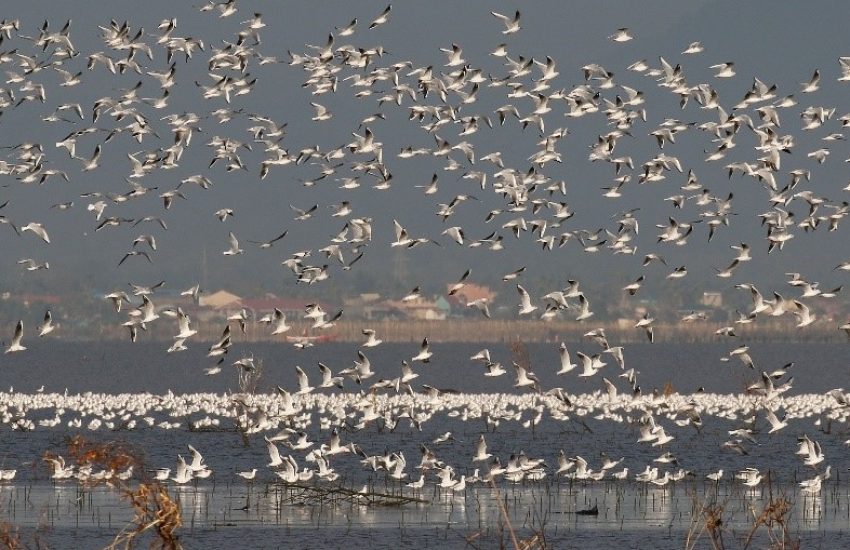Policy brief: tackling policy dilemmas for wetland restoration
08 December, 2025

Policy brief: tackling policy dilemmas for wetland restoration
08 December, 2025
Celebrating 6 years of Mobilising More for Climate
01 December, 2025
Thursday 25 february 2021
Header photo : Black-headed gull and whiskered tern in Pampanga river © Adrian Constantino
‘The export of Dutch master planning, and the investments that come along with it, are becoming enablers of destructive infrastructure development in Manila Bay, one of the country’s most important water bodies,’ Dulce says.
‘The technical support provided by the Dutch government to the Manila Bay Sustainable Development Master Plan, which serves as a 22-year blueprint for economic development in the greater bay area, failed to prevent the business-as-usual development of the EUR 1.5-billion San Miguel Aerocity reclamation project.
This Aerocity threatens to reclaim 2,500 hectares of foreshore areas in the bay, overlapping with mangrove expanses that serve as important fishing grounds and sanctuaries for migratory birds. It has also pressured fishing villages out of their homes and farther away from their livelihoods to pave the way for the development.’
It doesn’t come as a surprise to Dulce that the Aerocity project will be constructed by the Dutch firm Royal Boskalis. He wonders: ‘Will this pattern of Dutch master plans that seem to function as greenwashing for destructive land reclamation projects continue for the next 22 years?’
When asked how the Netherlands could support sustainable development in the Philippines, Dulce has a clear call to the Dutch government:
‘We urge the Netherlands to hold their export of water expertise and the financial flows that come with it to stricter accountability. The San Miguel Aerocity is a crucial acid test.
The Dutch government must be able to hold Dutch corporate interests accountable to above and beyond the standards their master planning presents. They may not be able to prevent a sovereign infrastructure project of the Philippines, but they could at least ensure that no Dutch money will be spent on a project riddled with ecological risks and human rights violations.’
08 December, 2025
As Europe accelerates efforts to restore wetlands and riverine ecosystems in line with biodiversity and climate goals, several complex policy…
01 December, 2025
On the 2nd of December 2025 we celebrated 6 years of Mobilising More for Climate (MoMo4C). During the event, we closed the current chapter on MoMo4C, celebrated our achievements, shared insights,…